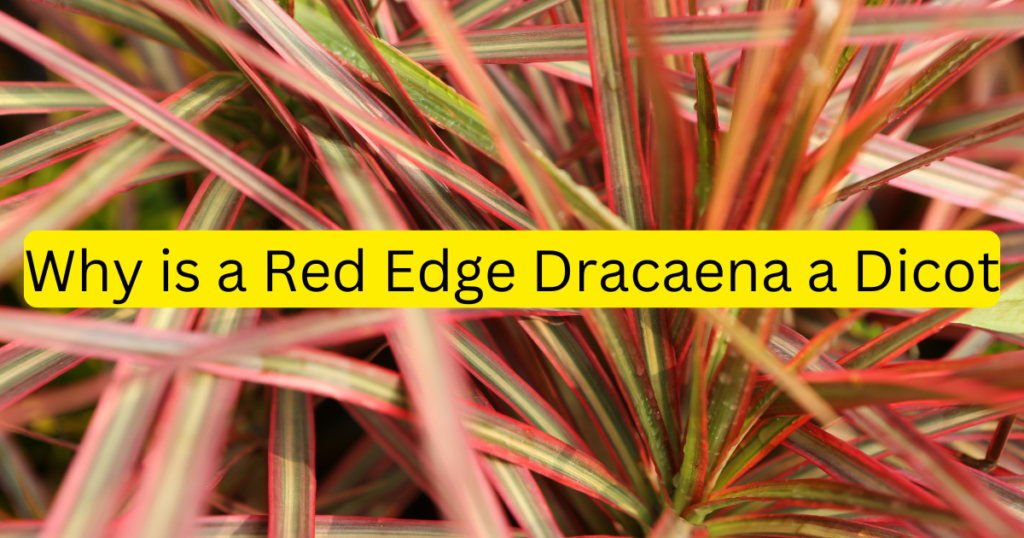When we think of houseplants, the vibrant and exotic appeal of a Red Edge Dracaena often comes to mind. With its striking green and red foliage, what many may overlook is its classification within the plant kingdom. In this article, we’ll delve into why is a Red Edge Dracaena a dicot, unraveling the intriguing characteristics that define this plant and its kin.
Understanding Plant Classifications
To comprehend why the Red Edge Dracaena is a dicot, we must first familiarize ourselves with plant classifications. The world of botany categorizes plants based on various characteristics, with one of the primary divisions being between monocots and dicots.
What Are Monocots and Dicots?
- Monocots: These plants have one seed leaf or cotyledon. They typically feature parallel leaf veins, flower parts in multiples of three, and have fibrous root systems. Classic examples include grasses, lilies, and orchids.
- Dicots: Conversely, dicots possess two seed leaves or cotyledons. They usually exhibit net-like venation in leaves, flower parts in multiples of four or five, and develop a more robust taproot system. Common dicots include roses, sunflowers, and—importantly for our discussion—the Red Edge Dracaena.
Characteristics of Red Edge Dracaena
The Red Edge Dracaena, with the scientific name Dracaena marginata, is a captivating houseplant that not only beautifies indoor spaces but also serves as a living reminder of the incredible diversity found in the plant world. It demonstrates many dicot-specific features.
Leaf Structure and Vein Pattern
One of the defining characteristics of dicots, why is a red edge dracaena a dicot, like the Red Edge Dracaena, is its leaf structure. The leaves showcase an intricate vein pattern that resembles a branching network rather than the straight lines of monocots.
- Net-like Venation: The leaves of the Red Edge Dracaena reveal an arrangement of veins that spreads throughout the leaf, which conserves water and strengthens the tissue against internal pressures.
- Variegation: The prominent red edges are a result of pigment that develops in response to environmental conditions, a trait often seen in dicots as they adapt to their surroundings.
Root System
The root system of the Red Edge Dracaena also tells a story about its classification. Unlike the fibrous roots of monocots, dicots typically develop a stronger taproot structure.
- Deep Roots: The taproot system provides stability and access to deeper water sources, which can be especially beneficial in times of drought.
Reproductive Features of Red Edge Dracaena
Reproduction is another differentiating factor in plant classification. Red Edge Dracaena plants reproduce via flowers, which, while rarely seen indoors, showcase the dicot trait of having flower parts in multiples of four or five.
Unique Flower Structure
- Petal Count: In a typical flowering scenario, the flowers would exhibit these multiples, emphasizing the plant’s classification as a dicot.
- Seed Development: After flowering, the production of seeds that contain two embryonic leaves is a clear indicator that this plant falls squarely within the dicot category.
The Importance of Dicot Classification
Understanding why is a red edge dracaena a dicot goes beyond mere botanical interest. This classification influences how gardeners care for this plant and its role in ecosystems.
Gardening and Care
For those interested in growing Red Edge Dracaena, knowing its classification helps in understanding its needs:
- Watering: Dicot plants often require less frequent watering compared to monocots due to their more developed root systems.
- Fertilization: Recognizing the nutrition requirements can lead to healthier plants. Typically, dicots benefit from nitrogen-rich fertilizers to promote leaf growth.
Ecological Considerations
Dicots play crucial roles in their ecosystems, from providing oxygen through photosynthesis to supporting various wildlife.
- Biodiversity: Including dicots like the Red Edge Dracaena in household or garden settings can promote biodiversity, which is vital for ecological balance.
Conclusion
In a world filled with a diverse array of plant life, the Red Edge Dracaena stands out not only for its striking appearance but also for its classification as a dicot. But why is a Red Edge Dracaena a dicot? Understanding its characteristics—from leaf structure to reproductive features—offers meaningful insights into the plant’s role in our world.
Embracing the knowledge of plant classifications enhances our gardening practices and deepens our appreciation for nature’s intricate designs. Next time you admire your Red Edge Dracaena, remember that it embodies the fascinating world of dicots—a testament to the wonder of plant diversity.
